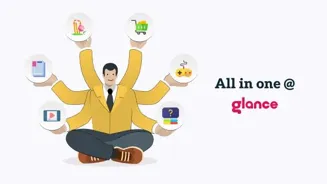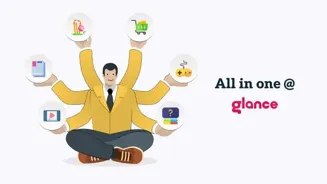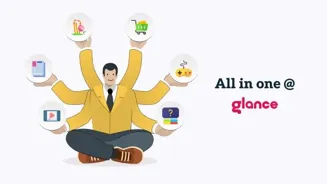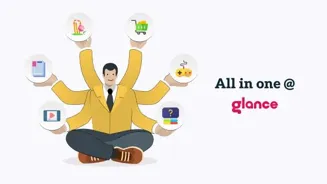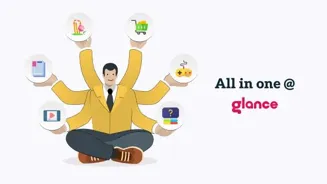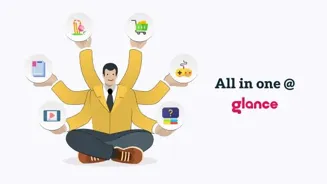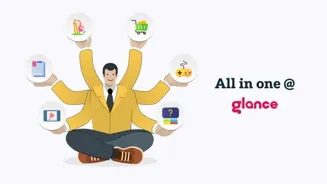Unlock Your Productivity Potential: 5 Techniques to Boost Efficiency and Achieve Goals. Dive in for insightful tips!
In today's fast-paced world, everyone is looking for ways to get more done in less time.
Productivity isn't just about working harder; it's about working smarter. It's about understanding the science behind how we focus, manage our time, and make the most of our energy.

Let's explore five techniques that can help you boost your output and achieve your goals, all without feeling overwhelmed or burnt out.
Pomodoro Technique: Time management with intervals and breaks
First, let's understand the Pomodoro Technique. Named after the tomato-shaped timer, the Pomodoro Technique is a time management method where you break down your work into intervals, traditionally 25 minutes in length, separated by short breaks.
It is a very simple method to follow and can yield good results.
Work in focused sprints with breaks to prevent mental fatigue
This technique encourages focused sprints of work followed by short, rejuvenating breaks. These intervals train your brain to focus for a set period and help prevent mental fatigue. After every four "pomodoros," take a longer break of about 20-30 minutes to fully recharge.
This method ensures that you are taking breaks from your work to keep your stress levels contained too.
Focus with Pomodoro Technique for enhanced productivity
Implementing this technique is simple. Set a timer for 25 minutes and dedicate that time to a single task, free from distractions like emails or social media. Once the timer rings, take a 5-minute break to stretch, walk around, or grab a drink. After four pomodoros, take a longer break.
This structured approach helps maintain focus and prevents burnout. You will feel more productive at the end of each session.
Embrace the Eat the Frog method for productivity
Secondly, take a look at the Eat the Frog method. The term"Eat the Frog" comes from a saying attributed to Mark Twain: "Eat a live frog first thing in the morning, and nothing worse will happen to you the rest of the day.
" In productivity terms, the "frog" is the most challenging or unpleasant task on your to-do list – the one you're most likely to procrastinate on.
Tackle toughest task in morning for positive day momentum
By tackling your most difficult task first thing in the morning, you not only get it out of the way but also set a positive tone for the rest of your day. You start with a feeling of accomplishment, knowing you've conquered the biggest hurdle.
This momentum can carry you through the rest of your tasks.
Tackle the hardest task first for a more productive day
To implement this, identify the most important (and likely most dreaded) task on your to-do list. Resist the urge to start with easier tasks. Instead, commit to working on the "frog" until it's complete, or at least until you've made significant progress.

Once you've eaten your frog, the rest of your day will feel much easier, and you'll find yourself more productive overall. This can even make you feel less stressed out and more content.
Eisenhower Matrix helps prioritize tasks by urgency and importance
Prioritization by Importance and Urgency. Let's focus on the Eisenhower Matrix, also known as the Urgent-Important Matrix, is a tool that helps you categorize tasks based on their urgency and importance.
This method helps you spend time on the tasks that matter the most and avoid getting caught up in less important activities.
The matrix is divided into four quadrants
Urgent and Important (Do First), Important but Not Urgent (Schedule), Urgent but Not Important (Delegate), and Neither Urgent nor Important (Eliminate). By categorizing tasks into these quadrants, you can make better decisions about how to allocate your time and energy.
Organize tasks by urgency and importance for efficiency
To use this matrix, create a list of all your tasks and then categorize each one according to its urgency and importance. Focus your attention on the "Urgent and Important" tasks first, as these require immediate attention.
Then, schedule time for "Important but Not Urgent" tasks to prevent them from becoming urgent. Delegate "Urgent but Not Important" tasks to others if possible, and eliminate "Neither Urgent nor Important" tasks altogether. The biggest advantage of using this method is your task will be organized.
Parkinson's Law: Work expands to fill time given
The fourth method that can be implemented is Parkinson's Law. It states that "work expands so as to fill the time available for its completion." In simpler terms, if you give yourself a week to complete a task, it will likely take you a week.

But if you give yourself only a few days, you'll likely finish much faster. This is because we tend to stretch out tasks to fill the allotted time, rather than focusing on efficiency.
Understanding Parkinson's Law boosts productivity with realistic deadlines
Understanding Parkinson's Law can help you be more productive by setting realistic deadlines and avoiding unnecessary time padding. By applying this law you can force yourself to be more productive and can complete more work in a lesser time frame.

Set specific deadlines, break tasks, increase focus, efficiency
To combat Parkinson's Law, set specific and realistic deadlines for your tasks. Challenge yourself to complete tasks in less time than you think they'll take. Break down large projects into smaller, more manageable tasks with their own deadlines.
By setting time constraints, you'll be more focused and efficient, and you'll avoid wasting time on unimportant details. A short and focussed schedule helps do it at a regular interval.
Adopt the Two-Minute Rule for enhanced productivity
The last method is the Two-Minute Rule. David Allen in his book"Getting Things Done" described the two minute rule as being important to productivity. This rule says that if a task takes less than two minutes to complete, do it immediately.

This simple rule can help you avoid procrastination and clear your mind of small, nagging tasks.
Take immediate action on small tasks to avoid overwhelm
The Two-Minute Rule is all about taking immediate action on small tasks rather than letting them accumulate and become overwhelming. By taking care of these tasks right away, you prevent them from cluttering your to-do list and distracting you from more important work.
For example, replying to a quick email, filing a document, or making a phone call are all tasks that can be done in under two minutes.
Implement the Two-Minute Rule for productivity
To implement the Two-Minute Rule, make a habit of asking yourself if a task will take less than two minutes to complete. If the answer is yes, do it immediately. Don't put it off until later.
By consistently applying this rule, you'll find that you're able to accomplish more in less time, and you'll feel more in control of your workload. This will prevent work build up, which is a common problem faced by many..
Learn and improve productivity with 5 key techniques
Productivity is a skill that can be learned and improved with practice. By incorporating these five techniques into your daily routine, you can optimize your focus, manage your time effectively, and maximize your output.

Remember, it's not about doing more; it's about doing what matters most, and that too efficiently. So, start experimenting with these techniques and discover what works best for you.
AI Generated Content. Glance/InMobi shall have no liability for the content